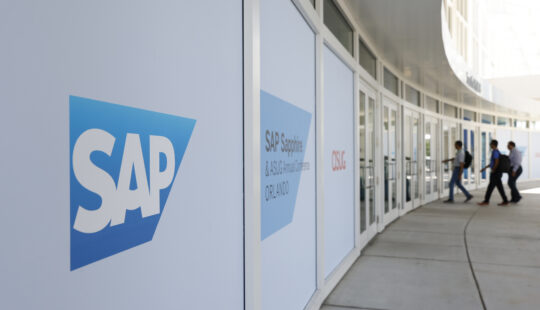SAP tells its customers how they should be transitioning their businesses using SAP technology – and the company makes sure this technology works by running it in-house.
“In our vision, every organisation and industry will become a network of intelligent, sustainable enterprises,” says Dr Oliver Gutzeit, vice-president: experience technology SAP at SAP.
“When we talk about business transformation, we talk about business agility, supply chain resilience, and sustainability outcomes.”
Transforming the business is the first step in any journey, Dr Gutzeit explains.
This starts with defining the strategic priorities and the business capabilities that support them.
At SAP this started with defining the corporate strategy, defining strategic themes, going through a review and decision-making processes, then moving to IT architecture – and finally delivery of systems that map to the corporate strategies.
Importantly, SAP leveraged its capabilities as a steering instrument to establish a clear link between strategy and execution.
“At the end of the day, IT had to deliver to SAP useful systems to deliver on the business strategy.
“This was a huge game-changer, enabling the business transformation through technology.”
The technology part of the transformation started with translating the business strategy into enterprise architecture, future-proofing this with data management and democratisation of the data.
Scale was vital, and this was achieved with hyperautomation and AI. The end result is to enable a sustainable enterprise that makes sense for employees and customers.
When designing a new enterprise architecture a new business model is vital. At SAP, the traditional business models were run while the new ones were developed within the house of business architecture that encompasses both runways in tandem, on the same foundation with common configuration and master data.
This tandem operation continues as business processes are migrated, modernised and simplified.
SAP runs S/4 HANA on a private cloud while running some traditional enterprise systems on-premise.
“That is why we dare to tell customers how to make the migration,” says Dr Gutzeit. “Because we are doing it ourselves.””
Once the architecture is in place, and there is a runway for enterprise transformation, SAP moved to future-proofing the enterprise with data management.
“We are also affected by trends in the market,” Dr Gutzeit says. These include data quality, multi-domain master data, data literacy, data automation, data marketplaces, and a requirement for a chief data officer.
SAP focuses on five strategic priorities: configurable material, one customer view, data governance, third-party centre of excellence, and cloud product master data.
SAP has defined data as a business capability within the company which is a strategic way of looking at data, Dr Gutzeit explains.
The end goal for data transformation is to democratise data which will increase productivity, accessibility, and agility.
SAP’s data democratisation framework is based on the data foundation layer, enriched with the semantic layer, and the consumption layer which gives users insights, based on the user persona. These personas could be consumers, data analysers, report creator, data modeler or data scientist among others.
Hyperautomation and AI are vital for scaling the digital enterprise.
SAP focused on the priorities identified to execute its AI strategy, defined in accordance with the company AI global AI ethics policy.
The priorities were to scale high-quality AI and deliver big data use cases; and to prioritise best-in-class big data and AI platform. The company aims to become a global AI development partner and AI thought leader and focuses on people, agility and organisational development
The company needed to realise value, and it did this by highlighting use cases and successful deployments.
A good example of how SAP embraced the digital enterprise was enhancing more than 50 live AI and ML use cases with new technology trends. The result was 105 new business processes that, developed by business users, increase innovation and outcomes.
“Employees can use these processes every day to increase their innovation and productivity,” Dr Gutzeit says.
Sustainability is at the centre of SAP’s policies, and the digitalisation of processes has helped the company to be more sustainable, to improve people’s lives.
“We have such a multiplication impact at SAP by doing things right,” Dr Gutzeit says.
At the end of the day, the mandate of the transformation journey is to create a digital experience for employees and customers.
The ONE customer portal transforms the digital experience, offering a single point of entry and delivering intelligent and personalised services.
No big change in any enterprise can be accomplished without keeping the people front and centre of the project.
SAP realised it had to catalyse transformation through a culture of change. This involved cultivating an innovation mindset, changing thinking patterns, and leading by example; investing in skills development and enabling career growth; and creating a culture of life-long learning, Dr Gutzeit explains.
This article first appeared on ITOnline.



